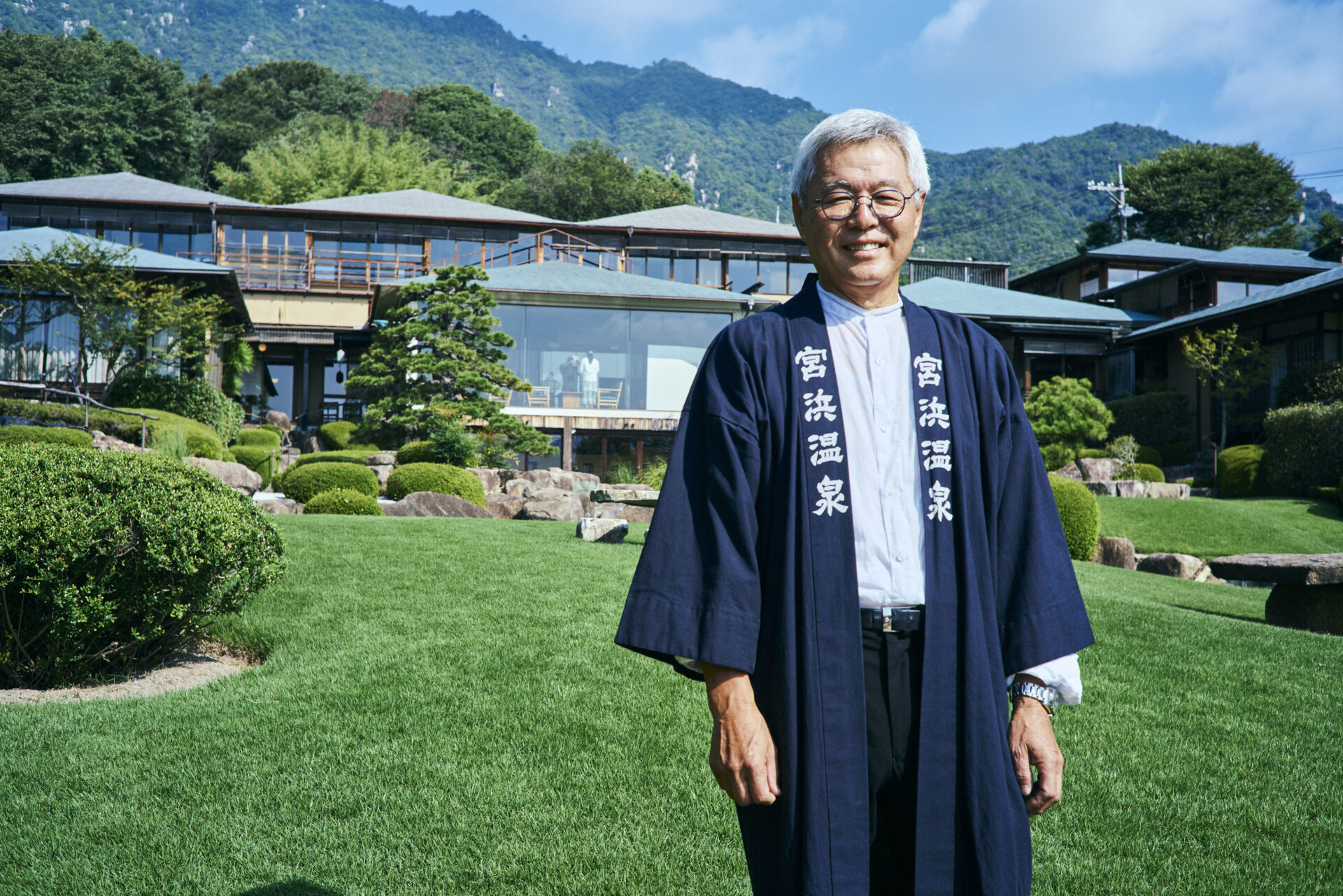
From Crisis to Revival, and Then to an Auberge: The Future Envisioned by Miyahama Onsen’s “Sekitei, the Garden Inn”

上野 純一
Junichi Ueno
Hatsukaichi [Hiroshima]
Junichi Ueno
Born in Hatsukaichi City, Hiroshima Prefecture. Second-generation head of Sekitei, the Garden Inn of Miyahama Onsen. Fourth-generation proprietor of Anagomeshi Ueno. After graduating from university, he joined the family business and achieved a revival of the inn, which had been pushed to the brink of closure. He adhered to his father's teachings—“Protect the garden, do not grow the inn larger, and keep harmony among siblings”—and has manifested uniqueness in garden, cuisine, rooms: things that can only be experienced here. Aiming for a “Japanese auberge,” he is also engaged in revitalizing the Miyajimaguchi area.
Overlooking the Seto Inland Sea, Miyahama Onsen’s Sekitei, the Garden Inn offers a garden highly praised at home and abroad, giving deep serenity to its visitors. The second‐generation proprietor, Junichi Ueno, has inherited his father’s will, yet has repeatedly introduced reforms suited to the times, nurturing a “time you can experience only here.” Always looking ahead, what future does Ueno envision?
Miyahama Onsen: Born with a Vision for the Town’s Future — Leading to the Founding of Sekitei
With one of the country’s foremost gardens, Sekitei, the Garden Inn draws many overnight guests from Japan and abroad. They delight in the garden’s shifting beauty through the four seasons, and also enjoy the twelve characterful guest rooms and cuisine that fascinates gourmets, savoring a time available only here. Junichi Ueno is the second-generation master of the inn.
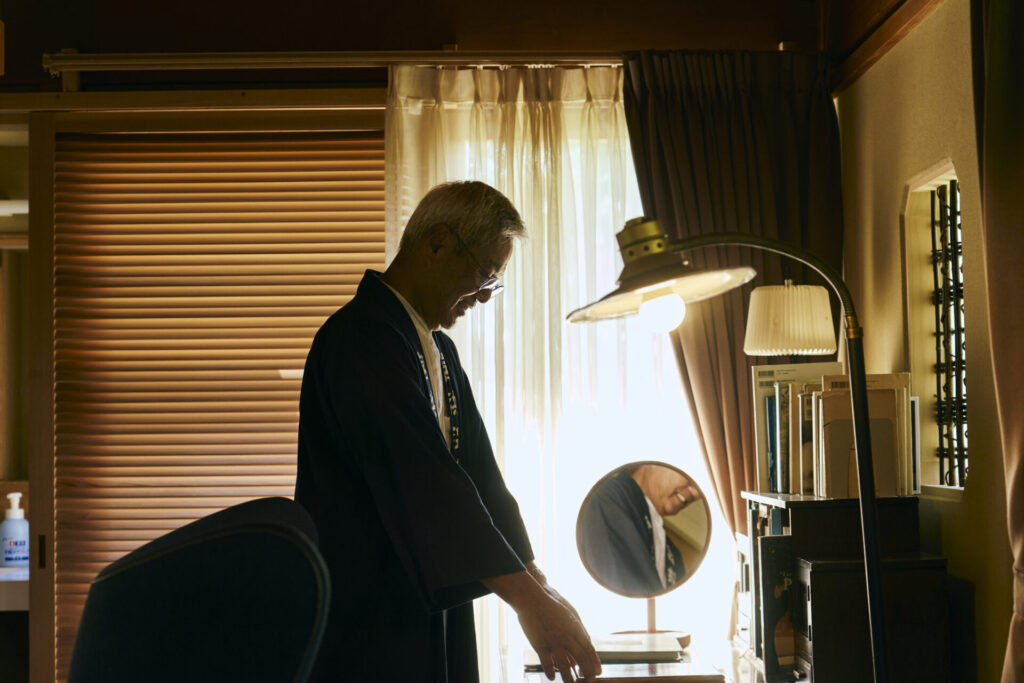
“To speak of the inn, I must first go back to the founding of Miyahama Onsen in 1964,” he says.
“When all of Japan was striving toward postwar reconstruction and full of vitality, my father served as mayor of Ōno Town (now part of Hatsukaichi City), located across from Miyajima. Thinking of the town’s future, he devoted himself to establishing a tourism hub so that visitors to Miyajima would also come to our town.”
That aspiration took form in a five-year “New Miyajima Project,” a large-scale development plan. Through extensive land preparation, the town gradually changed. In the course of that work, the hot spring of Miyahama Onsen was discovered. Before the project, though, the area had remained desolate for about twenty years after the war.
“In September 1945, just one month after the atomic bombing, a major typhoon—what is called the Makurazaki Typhoon—struck Hiroshima. The Army hospital on a hill was washed away, and among the victims were brilliant young researchers from Kyoto University who had been staying there to survey bomb damage. My father strove to breathe new life into this area, which later became Miyahama Onsen.
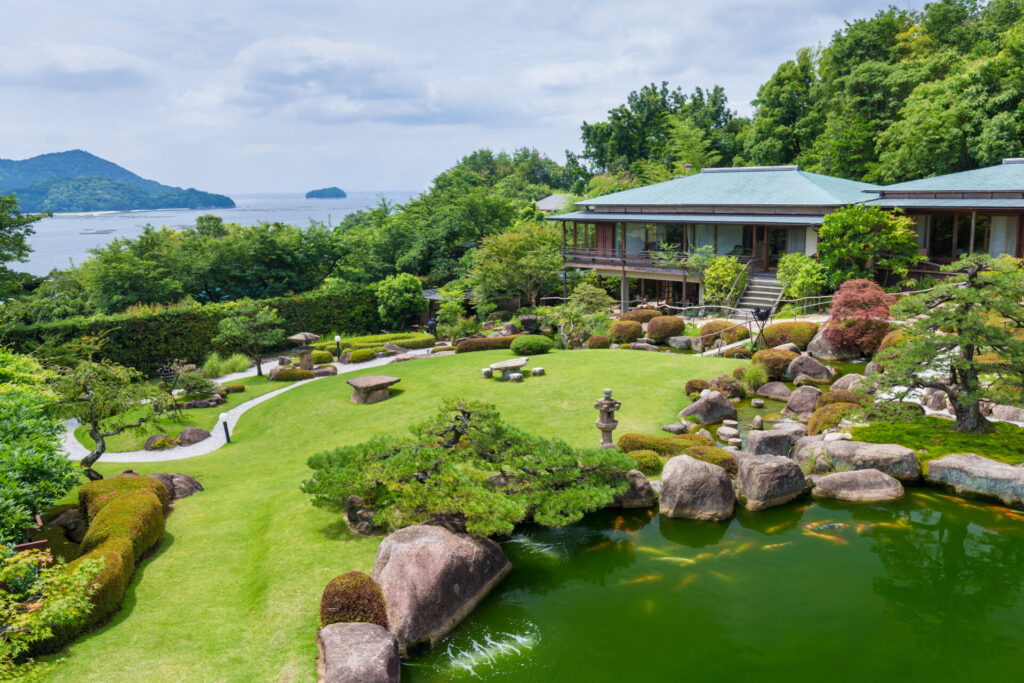
“In fact, the garden of Sekitei takes advantage of topological changes made by that typhoon. The large rock in the middle of the garden pond is said to have fallen during a landslide in the early Meiji era. Thus my father developed this region’s history along with Miyahama Onsen and Sekitei. He used to say, ‘This garden is a testament to recovery from water disaster.’”
Sekitei was founded just after the hot spring was discovered, launching its history as an inn under a mission: to protect the garden and the future of the region.
The Path of Reviving Sekitei — Facing It with Hope and Resolve
When Sekitei first opened, its rooms were filled with guests. During Japan’s high economic growth period, as “travel” became accessible to ordinary people, the inn had a good flow of guests. But within less than ten years, the oil crisis struck. From over a dozen inns around at the time of the spring’s opening, only four were left. Sekitei, long associated with an image of mass-market lodgings, struggled to maintain its banner.
Meanwhile, Ueno went to university in Tokyo. Though he sensed how the family business was faring, he also had the desire to leave home and “escape.” But his father said, “If you won’t take over, then we’ll close the inn.” So he resolved to become the successor. While still in his senior year, he worked diligently in Tokyo to find travel agencies that could promote Sekitei. Though results weren’t as expected, he gained confidence in marketing techniques in the travel industry.
Then he returned home. Though prepared in mind, seeing the actual state of the inn was heartbreaking. The Anagomeshi Ueno restaurant in Miyajimaguchi was also in poor condition.
“For me, already married, it was truly a difficult reality. But I couldn’t say no. I resolved I would not go home until I got contracts, and with business cards and photographs of the inn, I went to Osaka. On the third day, a travel agency told me it would be okay to represent Sekitei. You can’t imagine how happy I was. Still, for a while it was day‐by‐day sales. I welcomed advice from wherever I went. I realized I must improve the quality of the cuisine. I gave it my all. Then, guests began to increase, both from Osaka and locally. Some came out of kindness—from acquaintances, friends, or people who had known my father. Gradually the reputation rose.”
Later, Ueno’s younger brother joined the management, accelerating Sekitei’s transformation. Whatever seemed good or touched the heart, they adopted quickly. From a tablecloth to a lacquer tray, everything was chosen with care. Incredibly, guest numbers kept rising. In addition, lessons from top-ranked inn operators across Japan helped Ueno grow in his role as head.
“At first, my goal was for my brother and me to make Sekitei the most famous ryokan in Hiroshima. In hindsight, that was such a young person’s idea. But the transition was toughest when I took over the inn. I replaced the chef and many staff. To make Sekitei better, I had to choose people with whom I wanted to build the inn together. It was a painfully tough decision, but I resolved to do it.”
At that time, his guiding words were those from his father: “Protect the garden, don’t make the inn larger, keep family harmony.” Thanks to that, he shaped a concept: how to polish what currently exists and where to dig deeper.
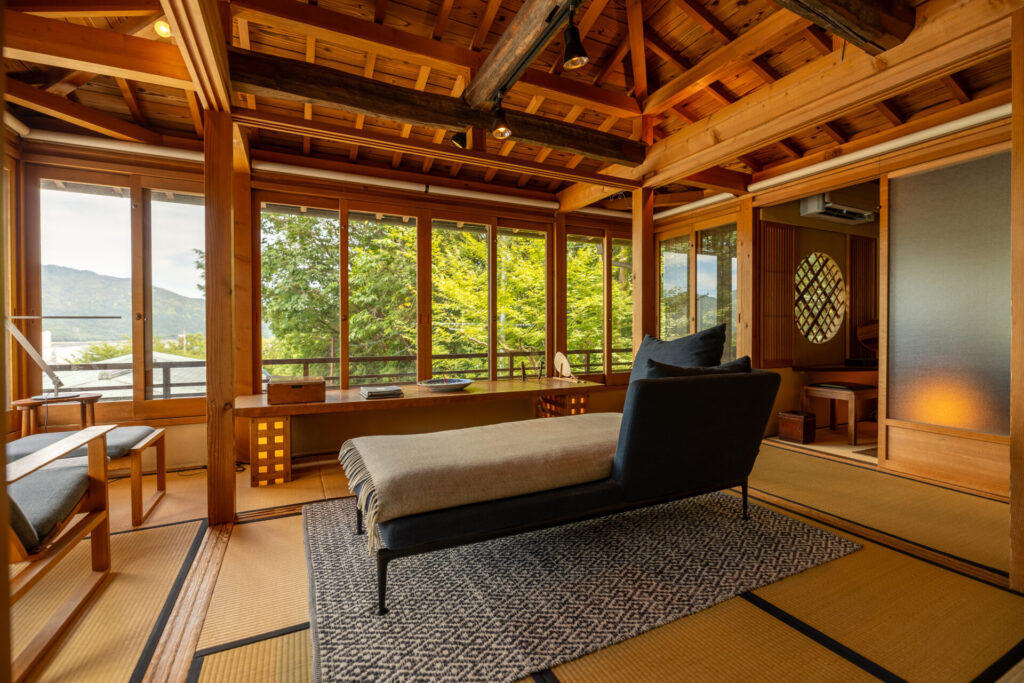
“From then on, every half year I take a week off and maintain the kitchen, baths, and renovate two rooms at a time. I agonize over this and that and refine them. A copywriter once saw the inn’s photos and said, ‘Every room is different and interesting.’ That evaluation delighted me. Also, looking at how guests appear from the garden—normally an inn would hide those views to protect privacy. But someone pointed out, ‘Your rooms are part of the scenery.’ I realized that was a unique individuality. Through accumulating these efforts, Sekitei was reborn. But I feel the true formation of Sekitei’s style is just beginning.”
Toward a “Japanese Auberge”: Sekitei’s New Challenge
“Twenty years ago, I already planned to make Sekitei a ‘Japanese auberge.’”
An “auberge” is a lodging with full-fledged cuisine, originating in medieval France. The main draw is not lodging, but food. Thus Sekitei invites talented young chefs, trusts in their potential, and nurtures an environment where they can devote themselves to cuisine. Thanks to that, its culinary reputation continues to rise.
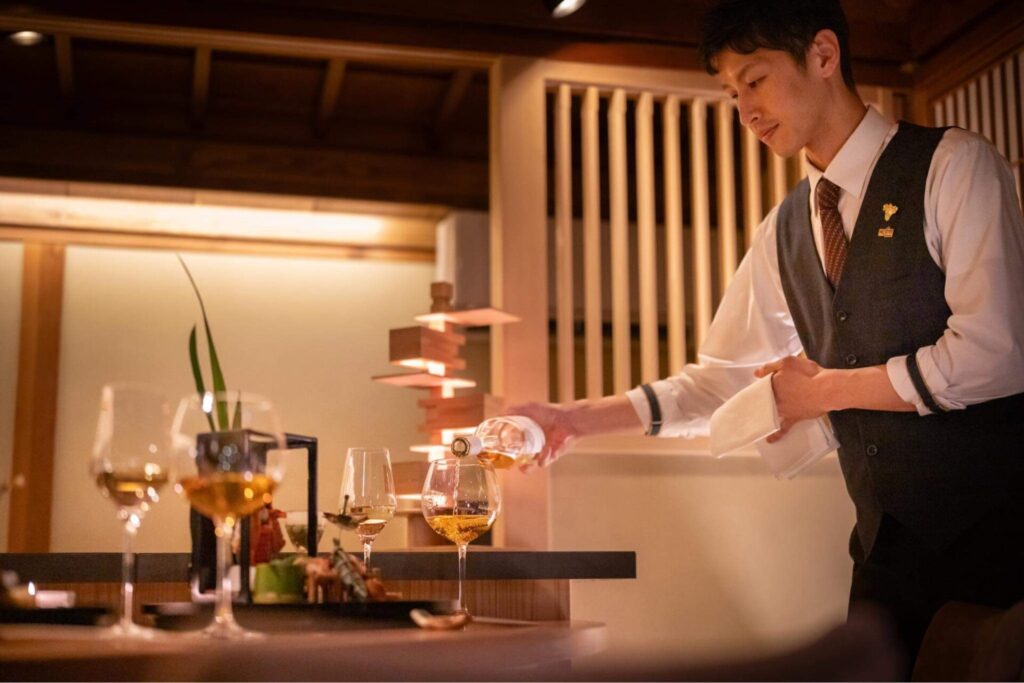
“In our inn, guests enjoy meals in their rooms, so we must deliver dishes such that the moment they taste them, they are at their best. The head chef arranges every course—appetizers, fried dishes, grilled dishes—with that in mind. For an inn aiming to be an auberge, he is indispensable. Guests who visit monthly often say that each time the cuisine evolves, becoming ever more delicious. That’s something you often don’t see, even in world-class restaurants or fine dining. In recent years, we have welcomed a capable sommelier, proposing wine and nonalcoholic drink pairings as a new way to enjoy cuisine. It’s wonderful if people stay for the room, but for me, I want them to come for the food. The room can be just a place to sleep. That is Sekitei’s new stage.”
By heading toward a “Japanese auberge,” Sekitei is steadily laying its groundwork.
The Best Way to Experience a “Living Garden”
Sekitei’s garden has ranked 4th in the Japanese Garden category of the Journal of Japanese Gardening for over ten years. Considering the many gardens, from Kyoto’s famous Zen gardens to museum landscapes, being 4th is a remarkable achievement. The reason, Ueno explains, is that this is not a garden to just “view,” but one to be “experienced”
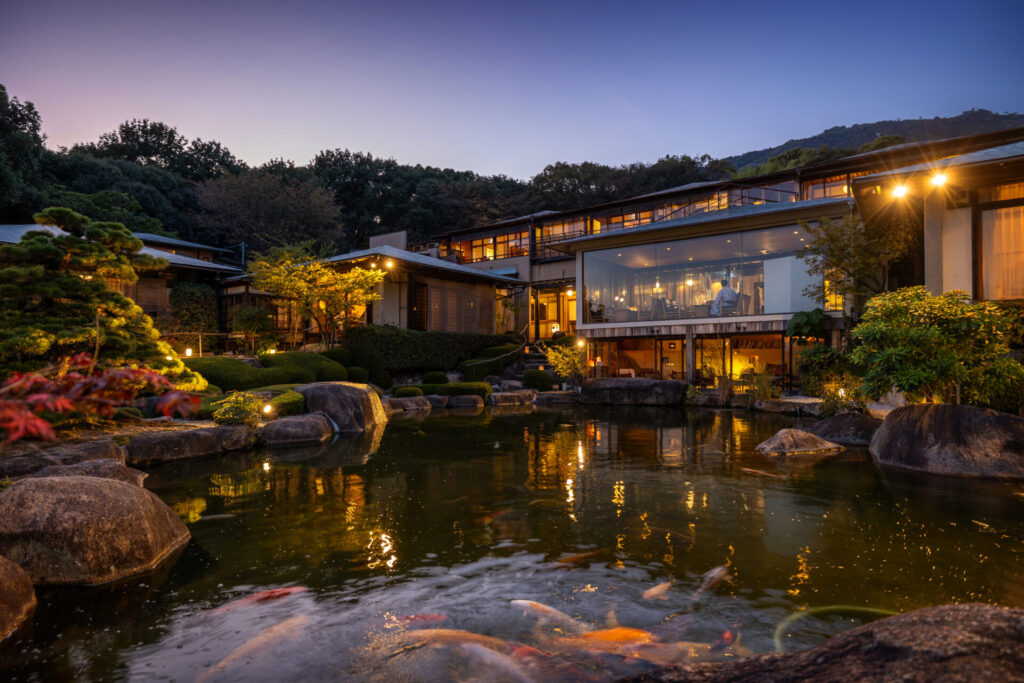
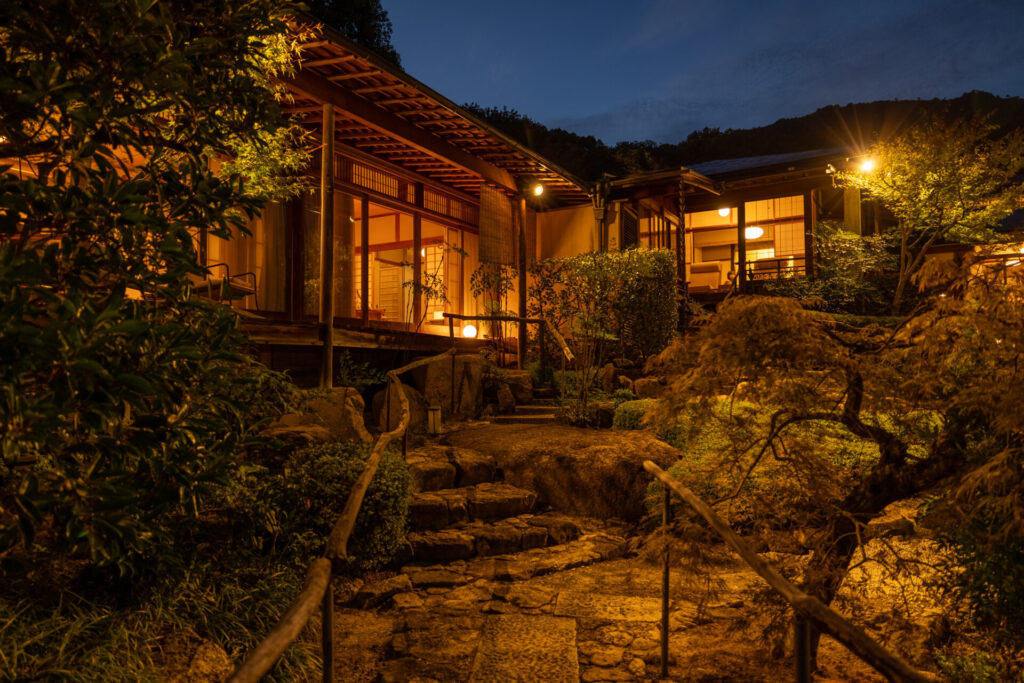
“This garden’s true value is felt when you actually stand in it. You look out and see the sea of Miyahama and Miyajima beyond; look back, and you see Mt. Kyogoyama. You will notice how each room blends into the trees and plants. The guests appear in the window frames, but plants and railings act as buffers, so the view is pleasantly obscured. Someone once said, ‘That distance is just right.’ That sense of distance turns everything you see into scenery. ”
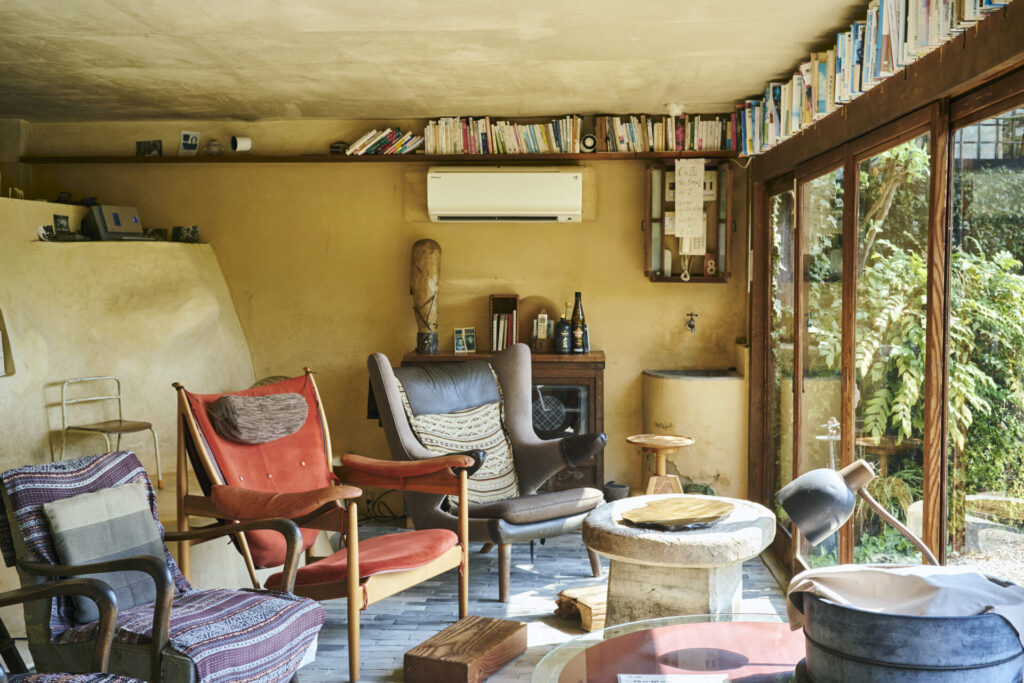
The ‘Sekitei circuit’ allows direct approaches from the garden. In four public spaces, various books and records are arranged. Guests can sit in beautiful Scandinavian chairs and relax with sake or coffee.
“What you see from there changes with time, and walking also lets you enjoy shifting views. By engaging yourself, you can feel many things. That is Sekitei’s ‘living garden.’”
In recent years, Ueno’s catchphrase is “an inn to stay two nights.” By staying two nights, guests can fully indulge in the garden, the cuisine, and the rooms. Of course, no menu is ever repeated. The sense of fulfillment and satisfaction derived is needless to say profound. Many guests already perceive Sekitei as a “Japanese auberge.”
What He Hopes to Connect to the Future
At last I asked Ueno: What does he hope to carry forward into the future?
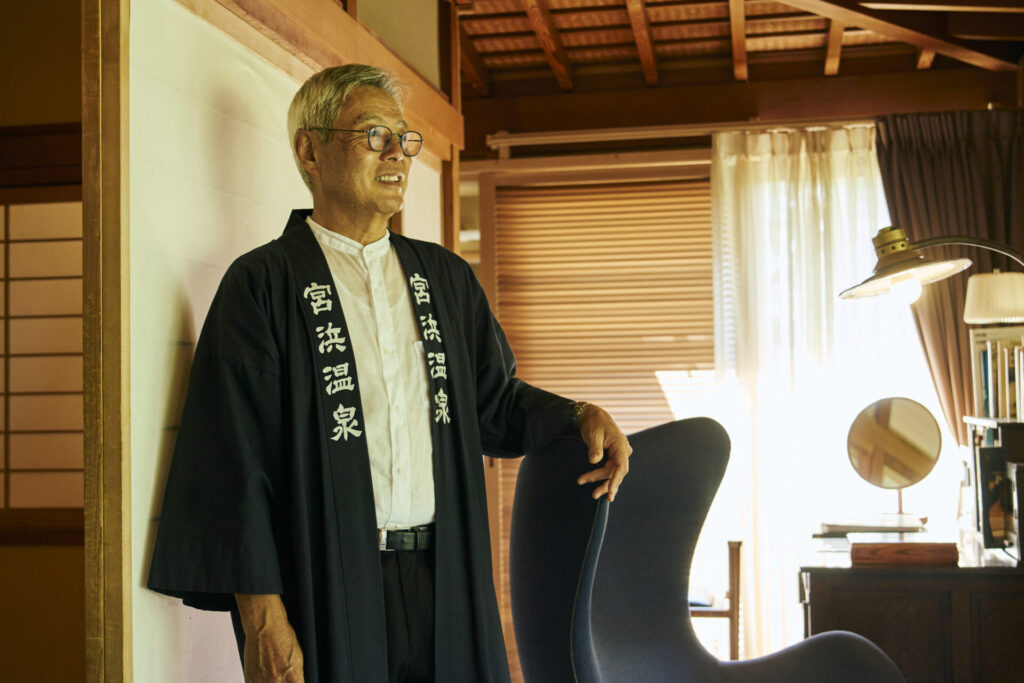
“Currently, Miyajimaguchi is nothing more than a passage point to Miyajima. Solving that issue is another of my life’s works. And ‘food’ is essential for the solution. For example, many tourists to Miyajima return to the mainland in the evening, but there are few dining options in Miyajimaguchi. Anagomeshi Ueno unfortunately closes by evening. If we could increase the number of places people can stop by, the circulation in Miyajimaguchi would rise and it would become a more attractive streetscape. We are considering ways to leverage the culinary know-how cultivated at Sekitei and Anagomeshi Ueno. But Anagomeshi Ueno can quietly continue its role—offering unchanged delicious eel. That role will be passed to the next generation.”
Because Ueno has conducted business for over a century in the Miyajimaguchi area, his attachment is strong. While harboring high expectations for the next generation, a strong sense of responsibility is evident.
He shared a historical fact: Miyajima is a “divine island,” and building graves there is not permitted. Therefore people who died on the island were often buried in the surroundings of Miyajimaguchi. Hearing that, one feels that Miyajimaguchi is not merely a gateway or a pass-through point—it is in fact part of Miyajima’s history. It should not be “passed through”; it should be a place to pause, a place with its own history.
The journey of Sekitei advancing into its next 100 years—and the changes in Miyajimaguchi—beckon with rising expectations.
